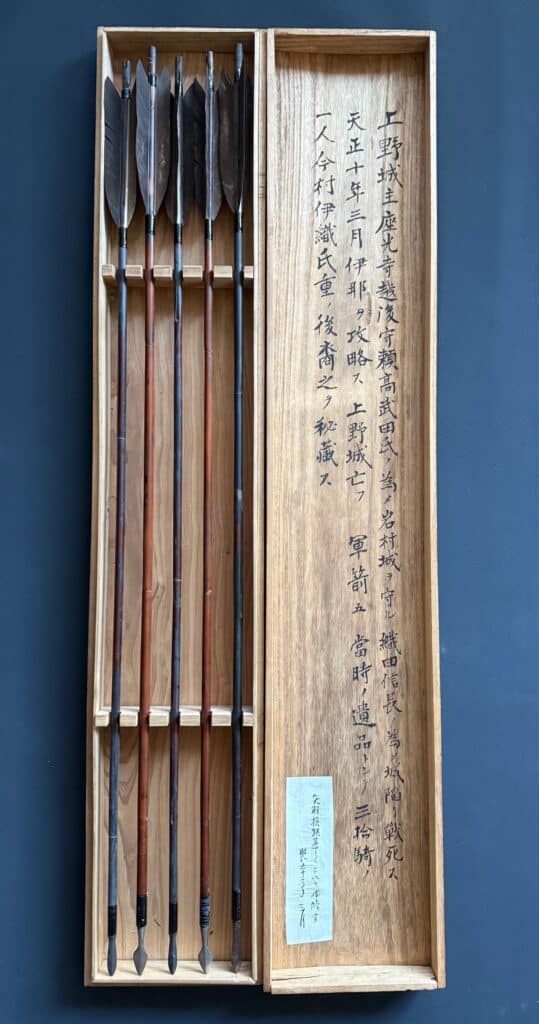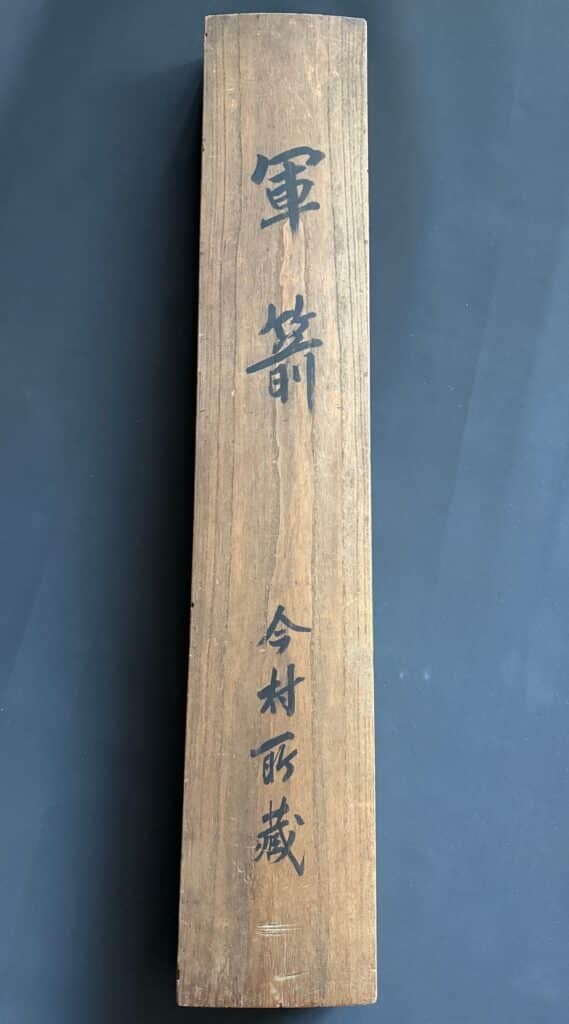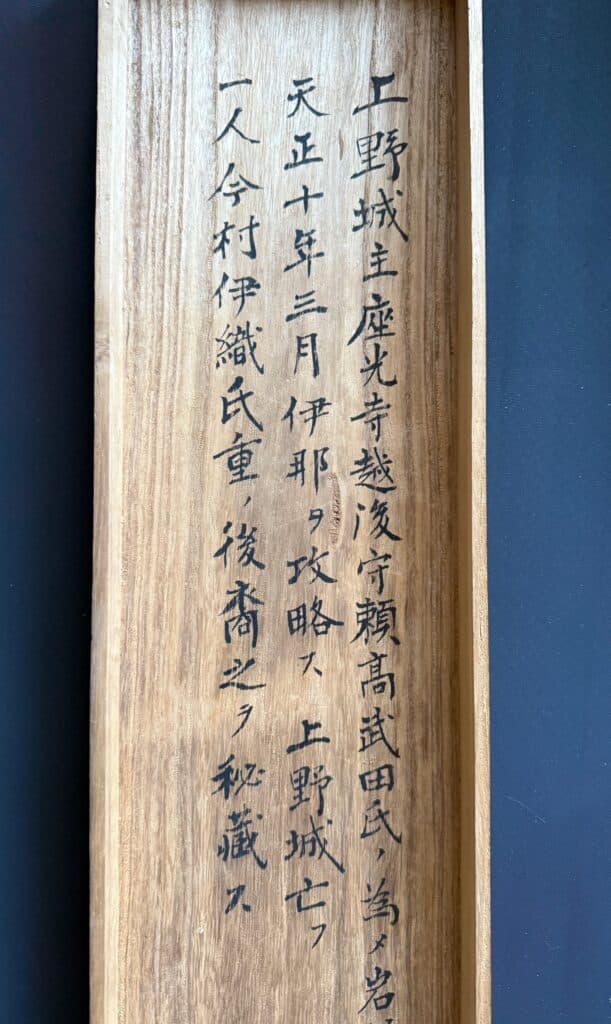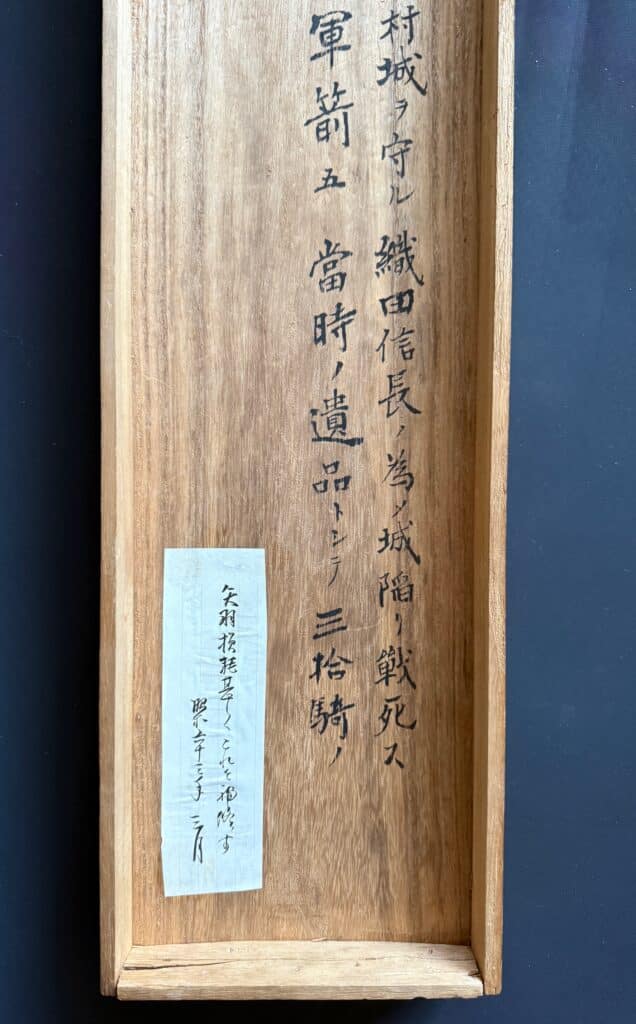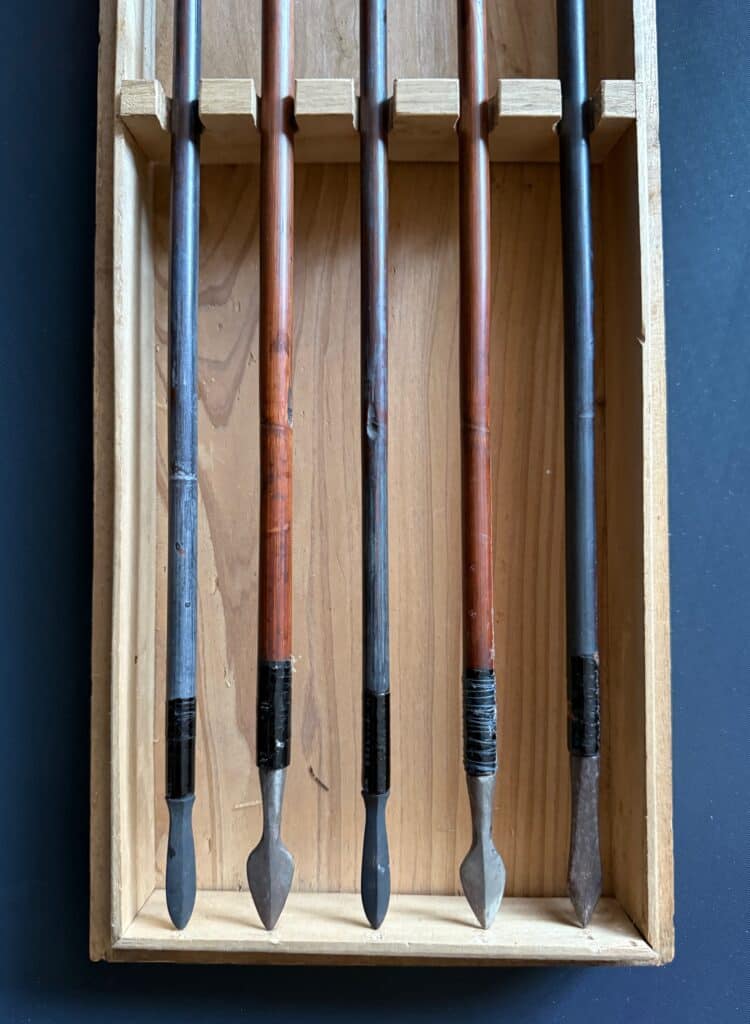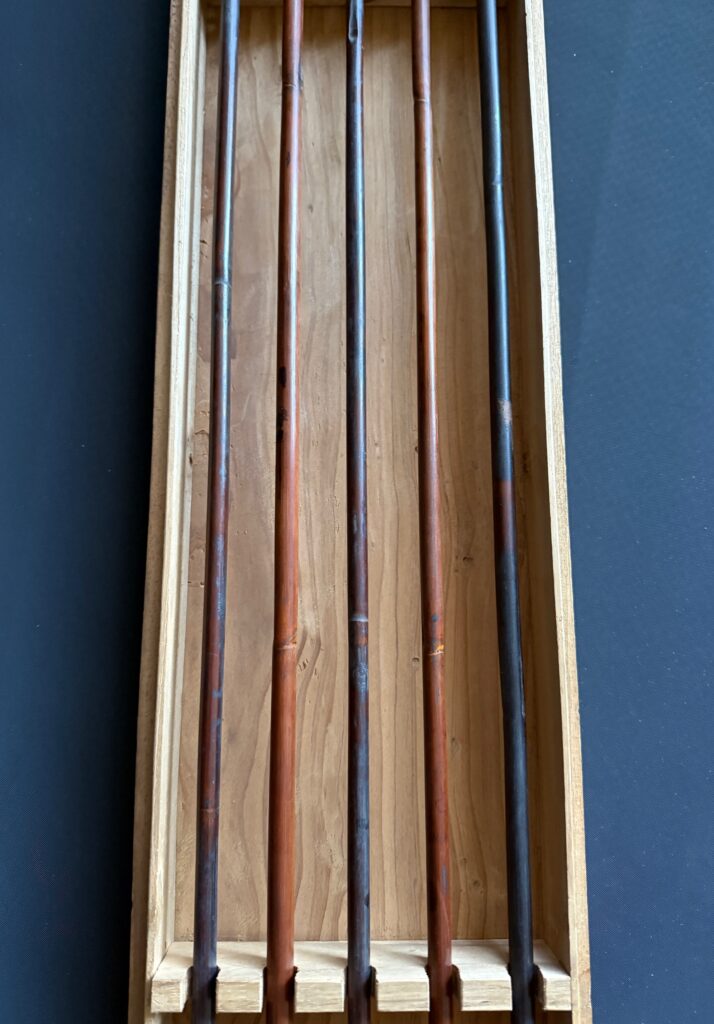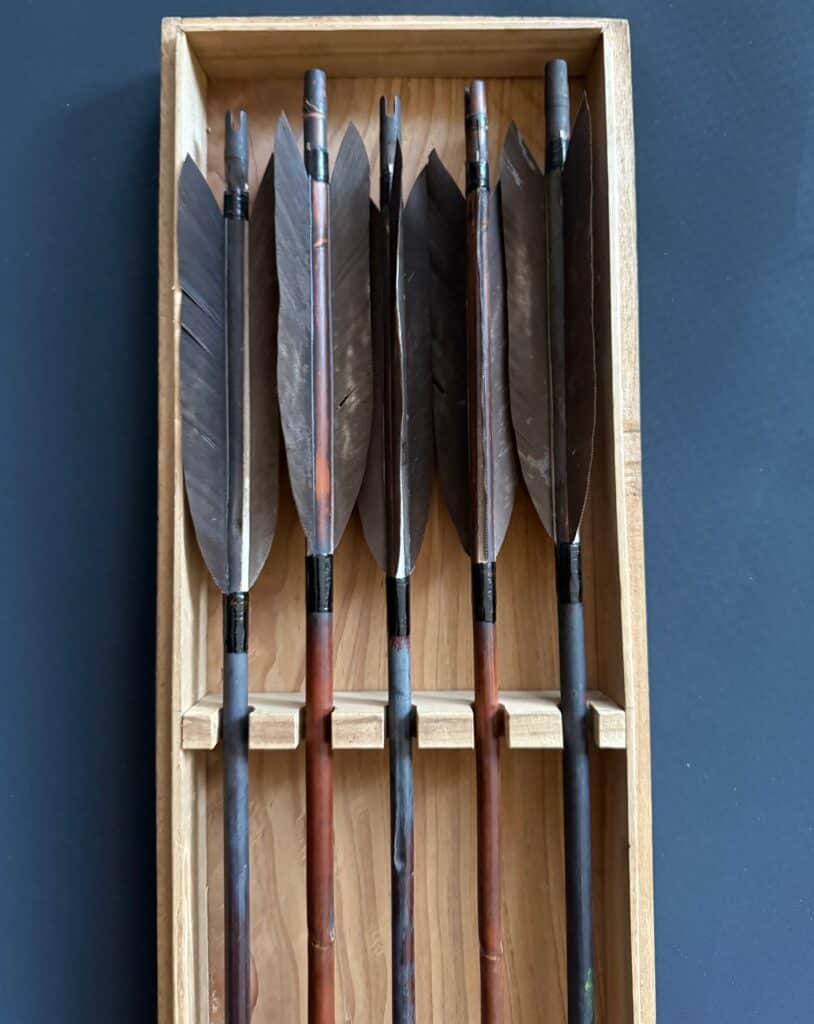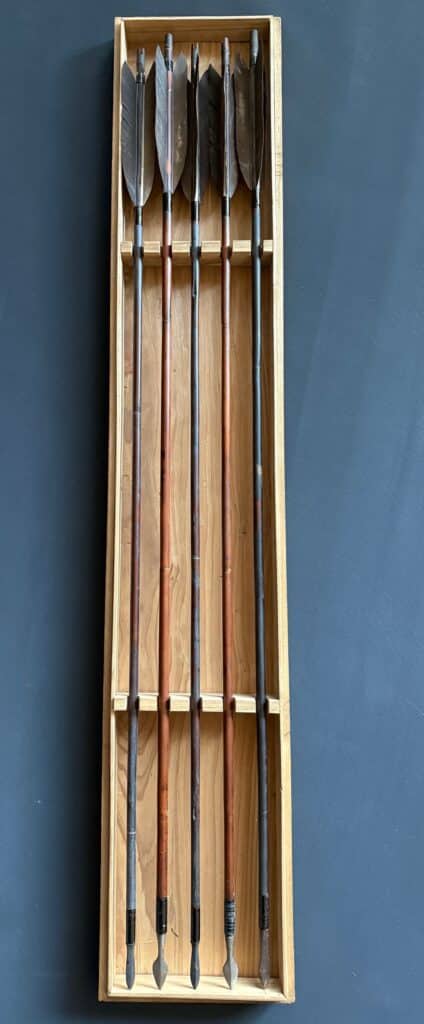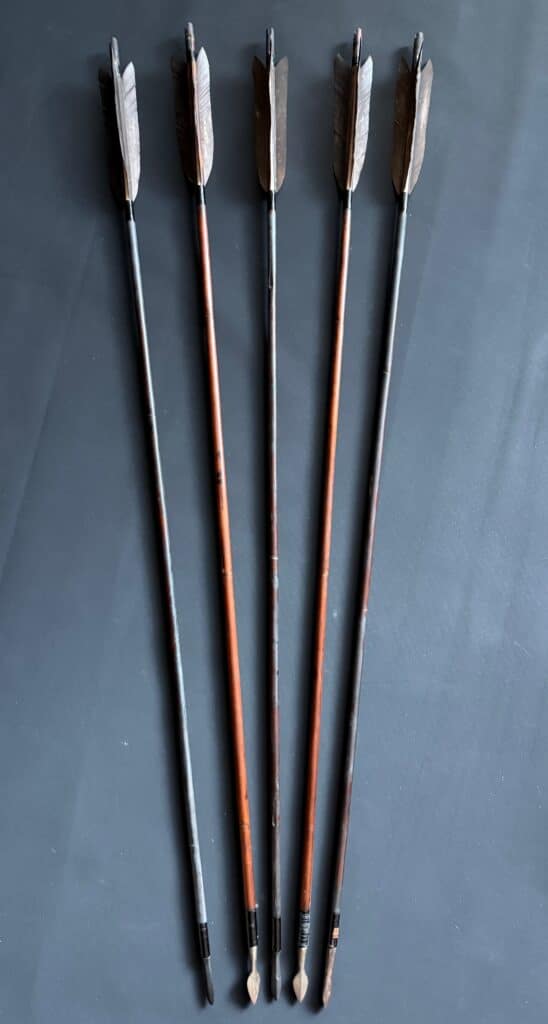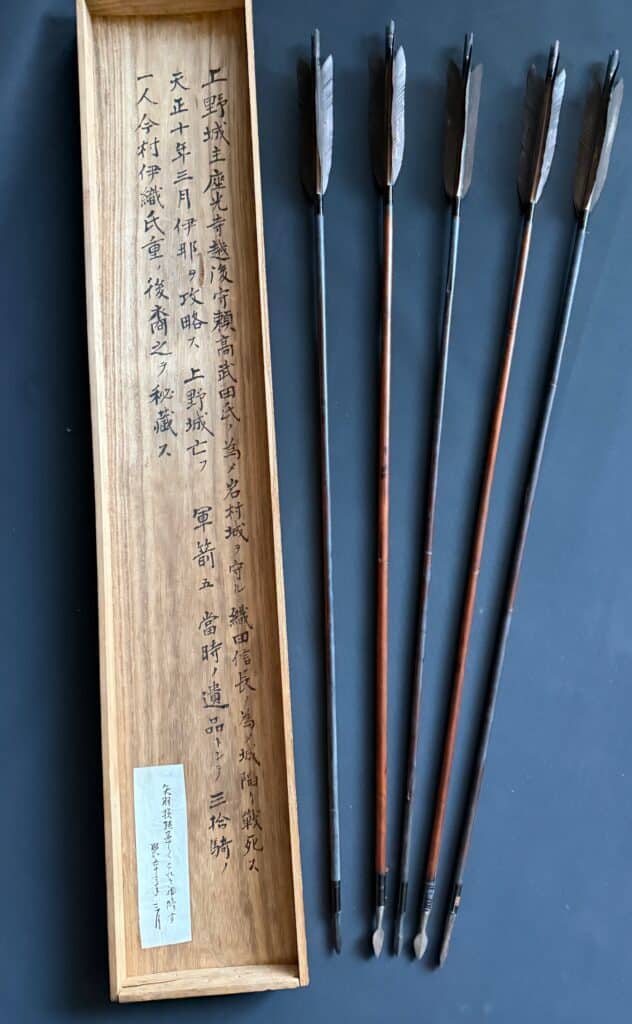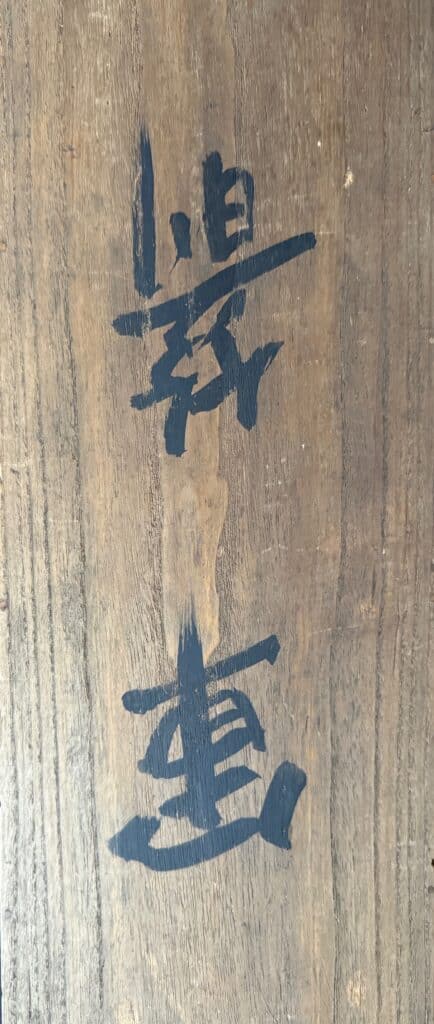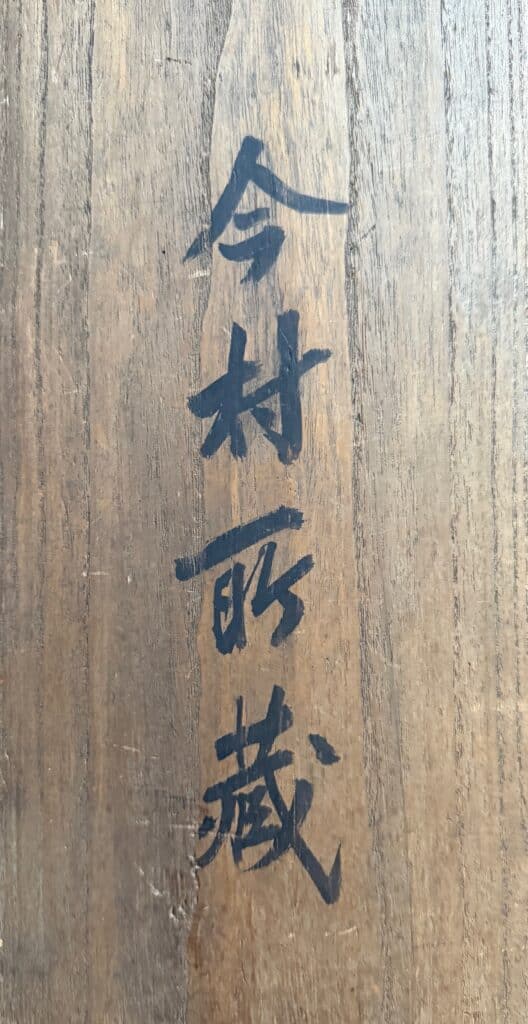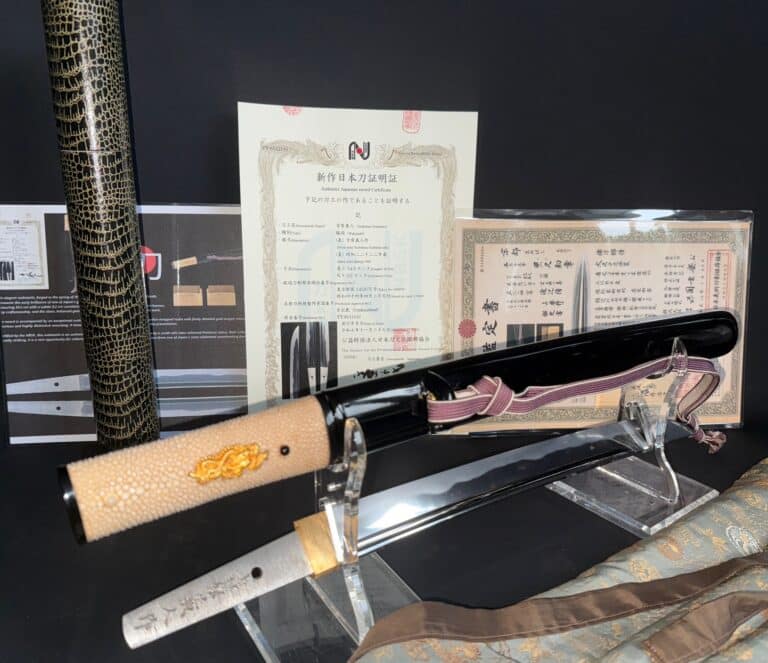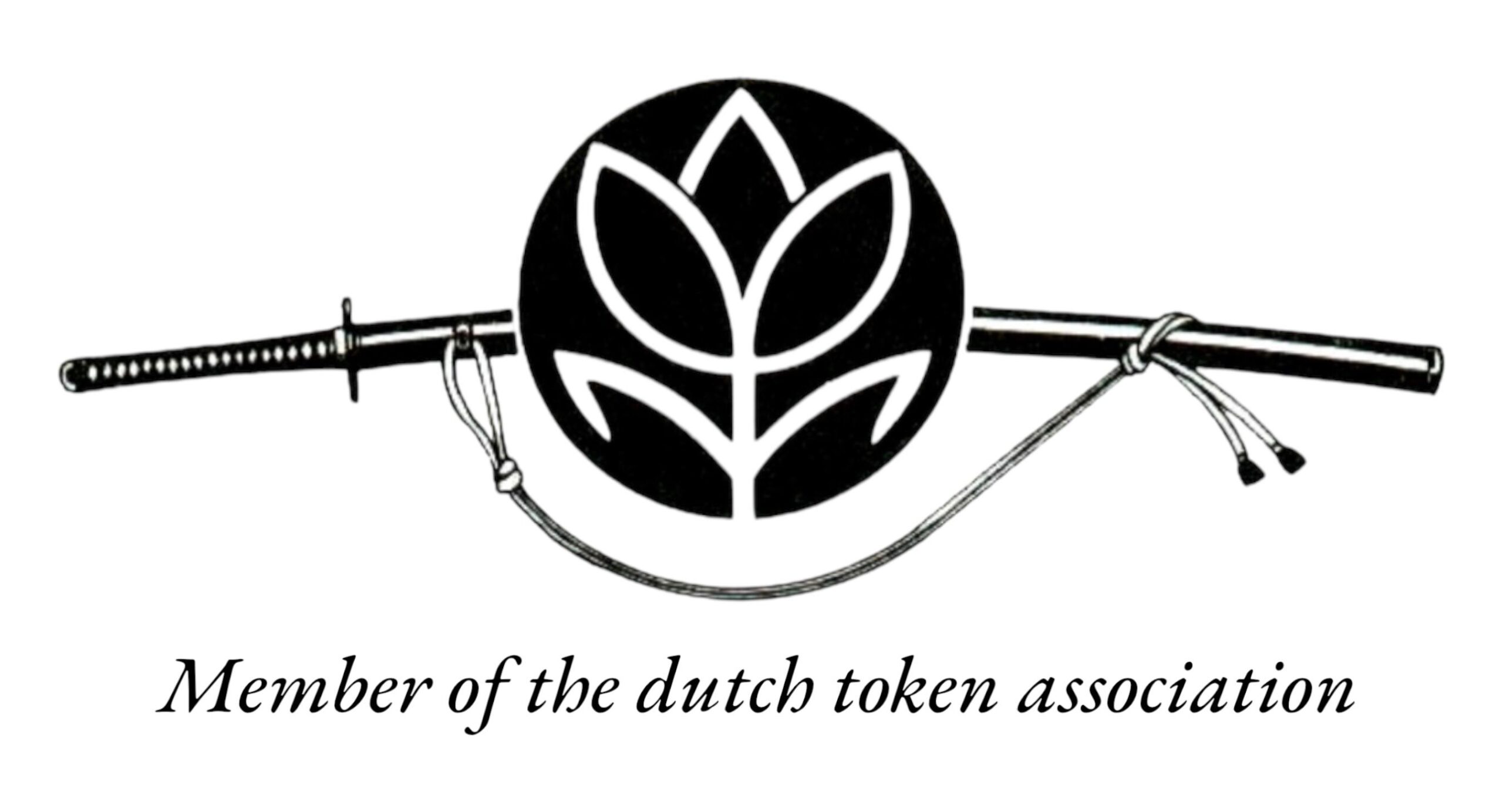Description
Edo period (1603–1868), the production of samurai weapons and tools was highly specialized, and archery played a significant role in the military, ceremonial, and cultural practices of the time. Here are five notable types of samurai arrows (ya) made during the Edo period:
1. Haya-yumi (早弓)
- Description: A type of arrow made for quick shots, typically used by samurai archers (yumi) on horseback. The “haya-yumi” arrows were often shorter than traditional long arrows, which made them suitable for the speed and maneuverability required in mounted archery.
- Material: These arrows were typically made from bamboo shafts, with a steel or iron arrowhead. The fletchings (feathers) were often made from natural materials like goose feathers, which helped stabilize the flight of the arrow.
2. Tō-yumi (遠弓)
- Description: These were long-range arrows designed for distance shooting. Samurai used them during battles to target distant enemies. The “tō” means “far,” indicating the purpose of the arrow.
- Material: The shaft was longer and more carefully crafted, often with higher-quality materials for increased flight distance. The arrowheads were typically made from iron or steel, sometimes with specialized designs for penetration.
3. Kiba-yumi (騎馬弓)
- Description: These were arrows specifically designed for mounted archery, which was still practiced by some samurai during the Edo period. The arrowheads were smaller and more aerodynamic to allow for fast firing from horseback.
- Material: Like other samurai arrows, kiba-yumi were typically made from bamboo or wood shafts, with iron or steel heads. The fletchings were smaller and less elaborate to minimize drag and ensure quick and stable flight.
4. Yumi-ya (弓矢)
- Description: A more general term for samurai arrows used in conjunction with the yumi (longbow). These arrows came in various forms for different purposes, such as armor-piercing or hunting. They were made with different types of arrowheads: pointed, barbed, or broad-headed.
- Material: The shaft of the arrow was typically bamboo, though some may have been made from wood. The arrowheads were forged from metal, often iron or steel, and designed to suit specific needs.
5. Fukiya (吹矢)
- Description: While not technically a traditional samurai arrow, the fukiya was a blowgun dart used by samurai or ninja in covert operations. These small, light projectiles were shot from a blowgun and were often used for poison or tranquilizer tips.
- Material: The fukiya darts were usually made of bamboo or wood for the shaft, with various materials (such as iron, bone, or even glass) used for the tips.

